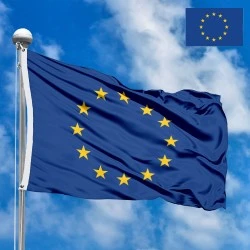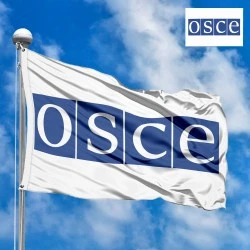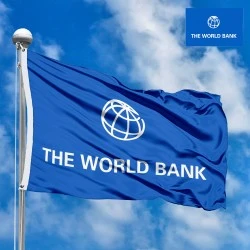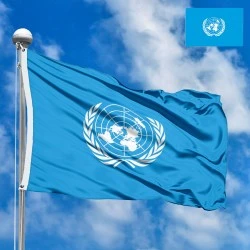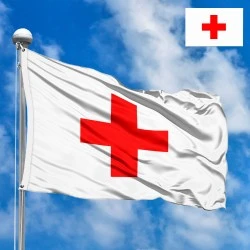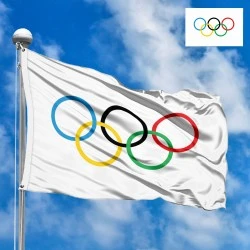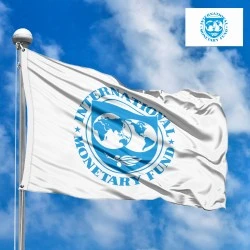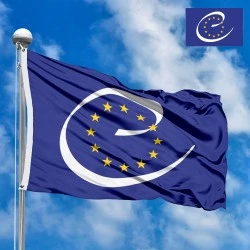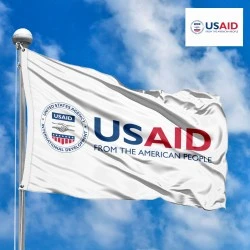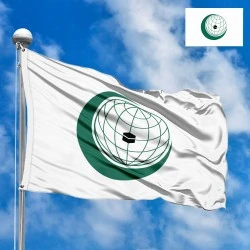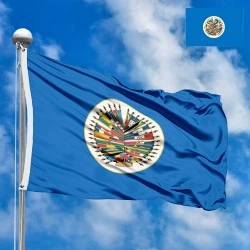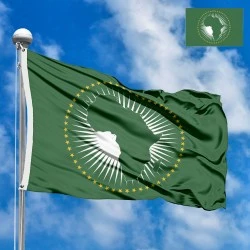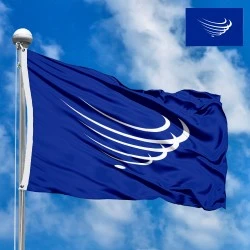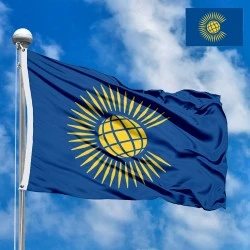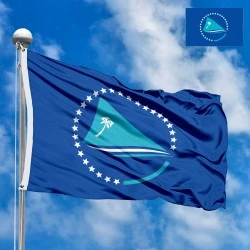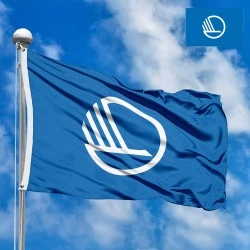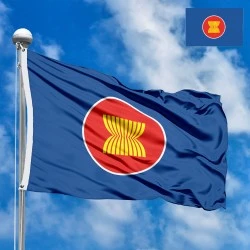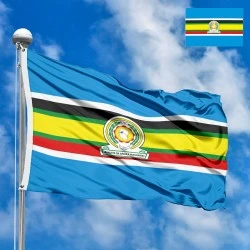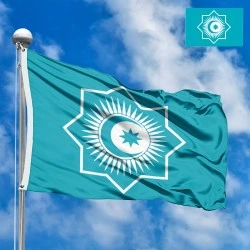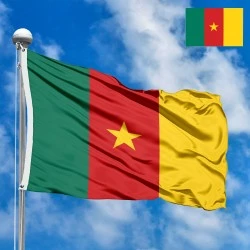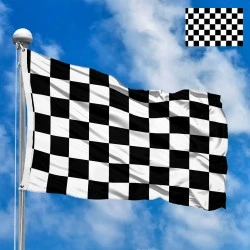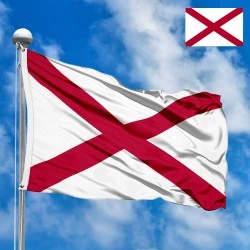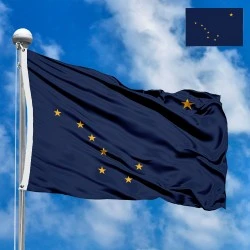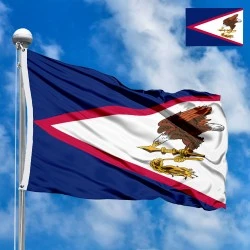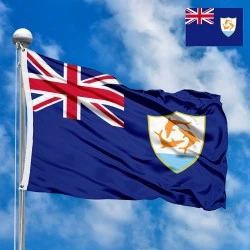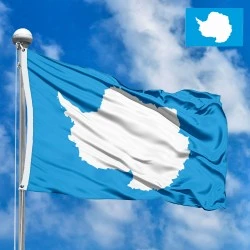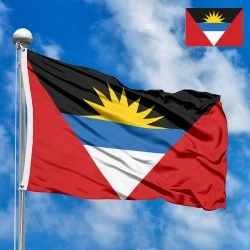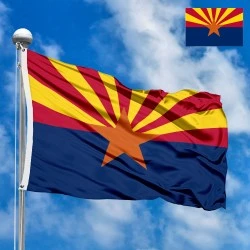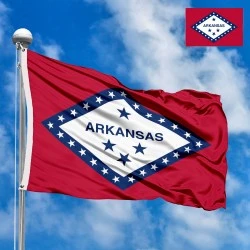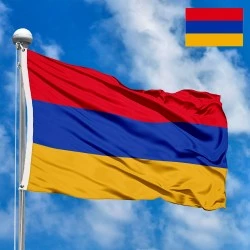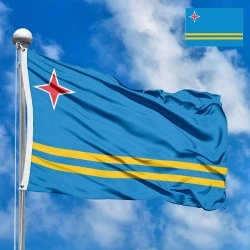- All Flags
- Flags of Countries by Continent
-
Flags of Organizations
- Flags of UN countries
- Flags of the European Union countries
- Flags of NATO countries
- Flags of the countries of the Organization of Islamic Cooperation
- Flags of the countries of the Organization of American States
- Flags of the Arab League countries
- Flags of the African Union countries
- Flags of the countries of the Union of South American Nations
- Flags of the Commonwealth of Nations
- Flags of the countries of the Secretariat of the Pacific Community
- Flags of the Nordic Council countries
- Flags of the Caribbean Community
- Flags of the countries of the Association of Southeast Asian Nations
- Flags of the East African Community
- Flags of the countries of the Organization of Turkic States
- LGBT Community Flags
- Historical Flags
- Ethnic Flags
- Flags of the USA (states)
Description
The NATO flag is an official and strictly regulated symbol that represents the visual expression of the principles and goals of the North Atlantic Alliance. This flag serves as an emblem of collective defense, unity, and solidarity among its 32 member states, united by the commitments outlined in the Washington Treaty. Its design was carefully developed to reflect the ideological foundations of the organization, created to maintain peace and security in the Euro-Atlantic region after World War II.
Design and Symbolism
The NATO flag has a deeply symbolic design, consisting of a blue banner with a white emblem in the center.
-
The Blue Field: The dark blue color symbolizes the Atlantic Ocean, which unites North America and Europe, forming the basis of the Alliance. This color is also associated with stability, calm, and determination.
-
The White Emblem: The emblem consists of two key elements:
-
A Compass Rose: The four-pointed star (compass rose) points to the four cardinal directions, symbolizing the readiness of member countries to defend each other, regardless of the direction of a threat. It also denotes the path to peace, which is NATO's main goal.
-
A Circle: The white circle surrounding the compass rose represents the unity, solidarity, and cooperation among the Alliance's member states. The circle emphasizes the integrity and indissolubility of the union.
-
Dimensions and Proportions
The official specifications of the NATO flag are defined with great precision. The background is blue (Pantone 280), and the emblem is white. The emblem is placed strictly in the center. The circle occupies approximately 4/7 of the flag's width, and the dimensions of the compass rose are also strictly regulated. Such precise proportions ensure the uniformity and official nature of the symbol in all contexts.
History of Creation and Adoption
The North Atlantic Treaty Organization (NATO) was founded on April 4, 1949, with the signing of the Washington Treaty. However, for the first few years, the Alliance did not have its own flag. The need for a visual symbol to represent the organization at international events and military exercises led to the initiative to create one. In 1953, a design competition was held, and the current version, designed by a member of the NATO International Secretariat, was ultimately chosen.
The flag was officially approved by the North Atlantic Council and adopted on October 14, 1953. It was first raised on November 9, 1953, at the opening ceremony of the Atlantic Exhibition in Paris, where the Alliance's headquarters was located at the time.
Countries and Regions
NATO is a political and military alliance that initially consisted of 12 founding countries. Over time, the Alliance has expanded and now includes 32 member states from Europe and North America. All these countries share common values and commitments to collective defense, enshrined in Article 5 of the Washington Treaty, which states that an attack on one member is an attack on all. The flag symbolizes this collective commitment to security and stability.
Interesting Facts
-
The choice of a dark blue color was not accidental: it was specifically chosen as a color that was not used in any of the national flags of the member states at the time of its creation, which underscores the neutral character of the symbol.
-
The NATO flag is one of the few symbols directly associated with the principle of collective defense, making it particularly significant in the context of international relations.
-
The flag is regularly flown at NATO headquarters in Brussels and at military bases in member countries, as well as during joint exercises and operations.
In the demonstration images, full-size flags are shown with proportions of 2:3, and hand-held flags with proportions of 1:2.
Donation
Download
Completely free for commercial and non-commercial use (public domain).
You can freely use them in your news magazines, websites, software, mobile applications.
We appreciate a backlink to https://flagssite.com
Raster files - NATO flag (PNG, JPG)
 Waving flag
Waving flag
- PNG format (transparent background), 72dpi, dimensions in Pixels (px), aspect ratio 3:4.
- 15х20 px
- 30х40 px
- 60х80 px
- 120x160 px
- 240x320 px
 Sizes:
Sizes:
"v15" - image size (by height); if necessary, replace with available: v15, v30, v60, v120, v240.
!!! For resizing, use the Latin (eng) keyboard layout.
<img src="https://flagssite.com/flags/v15/20802.png" alt="NATO flag">
 Round flag
Round flag
- PNG format (transparent background), 72dpi, dimensions in Pixels (px), aspect ratio 1:1.
"d15" - image size (diameter); if necessary, replace with available: d15, d30, d60, d120, d240.
!!! For resizing, use the Latin (eng) keyboard layout.
<img src="https://flagssite.com/flags/d15/20802.png" alt="NATO flag">
 Rectangular flag 2:3
Rectangular flag 2:3
- JPG format, 72dpi, dimensions in Pixels (px), aspect ratio 2:3.
"h30" - image size (by height); if necessary, replace with available: h15, h30, h60, h120, h240, h360, h480.
!!! For resizing, use the Latin (eng) keyboard layout.
<img src="https://flagssite.com/flags/h30/20802.jpg" alt="NATO flag">


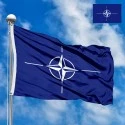
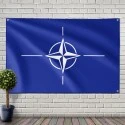
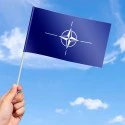

 Sizes:
Sizes:
 Sizes:
Sizes:
